Welcome to the fascinating world of birds in North America! This vast continent is home to various bird species, from the majestic Bald Eagle to the tiniest hummingbird.
Birds are everywhere in North America, from the lush forests of the Pacific Northwest to the deserts of the Southwest. From the Great Lakes to the Gulf Coast, birds inhabit every corner of this continent.
Whether you are an experienced birder or just getting started, North America is a great place to observe and enjoy birds. From the brightly colored cardinals and blue jays to the more elusive owls and woodpeckers, you will find an abundance of birds to observe and appreciate.
So, take some time to explore and enjoy North America’s fantastic world of birds.
19 Birds to Watch in North
North America is home to a rich diversity of birdlife, from tiny hummingbirds to majestic eagles. Whether you are a beginner or an expert birder, there are many places where you can enjoy watching these feathered wonders.
Here are 19 birds you should look for in different regions of North America and where to find them.
1. American Goldfinch
The American goldfinch is a small bird belonging to the finch family. It can be found in North America, extending from mid-Alberta to North Carolina during the breeding season.
During the winter, the goldfinch can be seen in temperatures just south of the Canada-United States border, as far south as Mexico. The American goldfinch is migratory, meaning it will move between different areas depending on the season.
It is common for the bird to travel long distances to find the most suitable habitats for breeding and foraging. The American goldfinch is an integral part of the North American bird population, and its migratory habits help to preserve its numbers.
| Kingdom | Animalia |
| Phylum | Chordata |
| Class | Aves |
| Order | Passeriformes |
| Family | Fringillidae |
| Genus | Spinus |
| Species | S. tristis |
2. American Crow
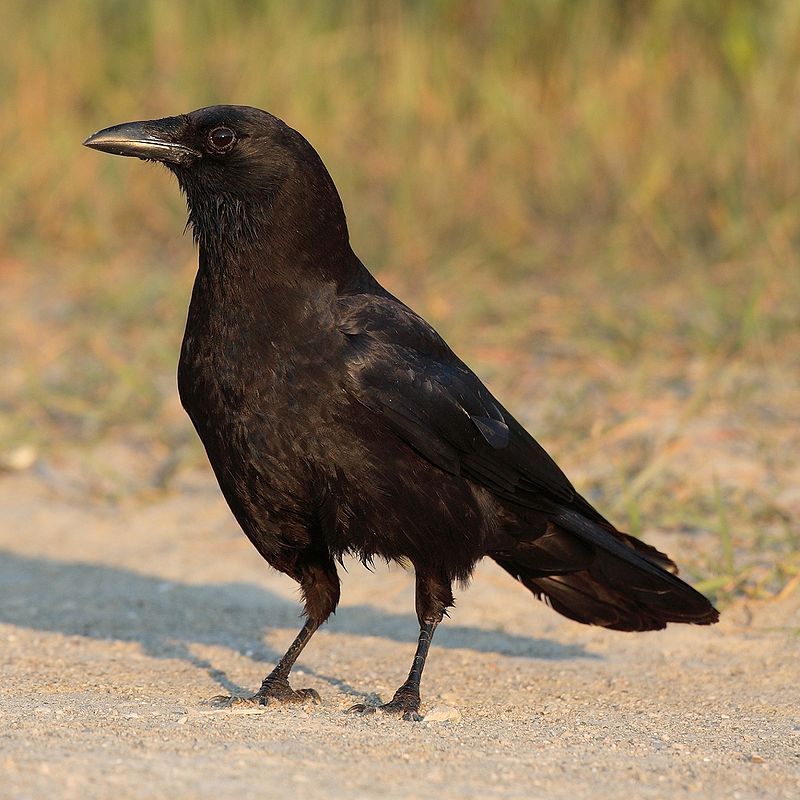
The American crow is a prominent type of bird that belongs to the Corvidae family. It is a widespread bird found in many parts of North America. The American crow is closely related to the carrion crow and the hooded crow found in Eurasia.
These species occupy the same general habitat, meaning they all have very similar ecological roles. The American crow is a common sight in urban and rural areas, where it can be seen scavenging for food or gathering in large flocks.
It is an intelligent species that can adapt to various habitats and ecological niches.
American crows are an essential part of the ecosystem, providing a valuable food source for other animals, playing a vital role inin seed dispersal, and keeping pest populations in check.
| Kingdom | Animalia |
| Phylum | Chordata |
| Class | Aves |
| Order | Passeriformes |
| Family | Corvidae |
| Genus | Corvus |
| Species | C. brachyrhynchos |
3. Anna’s Hummingbird
Anna’s hummingbird is a species native to western coastal regions of North America. It was named after Anna Masséna, Duchess of Rivoli, and is widely recognized for its distinct physical features and behavior.
Anna’s hummingbird is medium-sized, with males having a bright, metallic green body, a reddish forehead, and a deeply forked tail.
The females are slightly duller in color, but they both have an iridescent pinkish-orange throat patch in the early 20th century.
Anna’s hummingbirds were primarily limited to northern Baja California and Southern California. Still, they have since expanded their range further north and can now be found in many parts of Canada and the United States.
These birds are typically found in woodlands, chaparral, and gardens, and they feed on small insects and nectar from flowers.
They are also known for their complex courtship displays, which involve the male hummingbird flying high in the air and making a sharp dive toward the female.
| Kingdom | Animalia |
| Phylum | Chordata |
| Class | Aves |
| Clade | Strisores |
| Order | Apodiformes |
| Family | Trochilidae |
| Genus | Calypte |
| Species | C. anna |
4. Northern Cardinal
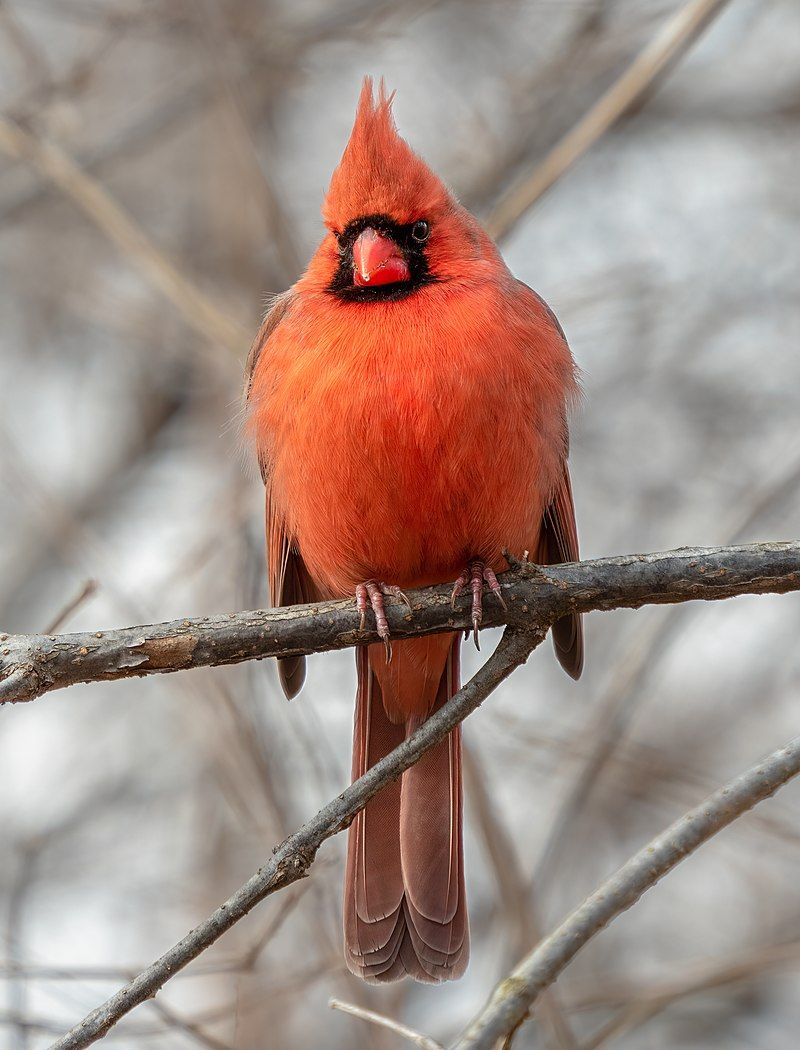
The northern cardinal is a well-known bird that has several different names. It is commonly called the redbird, common cardinal, red cardinal, or simply cardinal. This species belongs to the genus Cardinalis and is recognizable by its bright red coloration.
It is native to the eastern and central United States and parts of Mexico and can be found in various habitats ranging from forests and wetlands to urban areas.
The male cardinal is most easily identifiable by its bright red head, wings, and tail, while the female is duller. The northern cardinal has a loud, distinctive song that can often be heard during the spring and summer.
It is an omnivorous species, feeding on various seeds, fruits, and insects. The northern cardinal is a popular bird species in the wild and captivity due to its vibrant coloration and pleasant song.
| Kingdom | Animalia |
| Phylum | Chordata |
| Class | Aves |
| Order | Passeriformes |
| Family | Cardinalidae |
| Genus | Cardinalis |
| Species | C. cardinalis |
5. American White Pelican
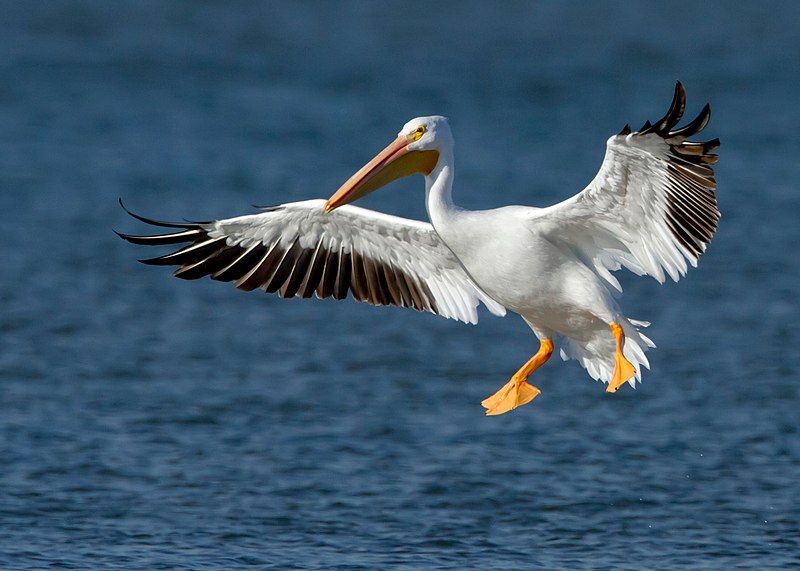
The American white pelican is a majestic bird belonging to the order Pelecaniformes. It is well-known for its large size and ability to soar in the air for long periods.
The white pelican is native to North America but often migrates south and to the coasts during the winter months. Its range extends as far south as Costa Rica. During the breeding season, the white pelican is found in the interior parts of North America.
The bird can survive in various habitats, including wetlands, lakes, rivers, and coastal areas. Its diet consists mainly of fish, which it catches by diving from the air.
The American white pelican is an integral part of the local ecology, as it helps to keep fish populations in check. In addition, the bird is admired by birdwatchers and other wildlife enthusiasts alike due to its striking appearance and graceful flight.
| Kingdom | Animalia |
| Phylum | Chordata |
| Class | Aves |
| Order | Pelecaniformes |
| Family | Pelecanidae |
| Genus | Pelecanus |
| Species | P. erythrorhynchos |
6. American Avocet
The American avocet is a species of bird in the avocet and stilt family, Recurvirostridae. This species is found in North America and prefers to inhabit shallow bodies of water or mud flats in their natural habitat.
The American avocet has a unique foraging technique involving moving its bill from side to side in the water to search for edible crustaceans and insects.
This technique is used to sift through the water and locate food, and the bird can then eat its catch. The American avocet is a unique species of bird that is well adapted to living in its wetland habitat, using its specialized foraging technique to find food.
| Kingdom | Animalia |
| Phylum | Chordata |
| Class | Aves |
| Order | Charadriiformes |
| Family | Recurvirostridae |
| Genus | Recurvirostra |
| Species | R. americana |
7. American Kestrel
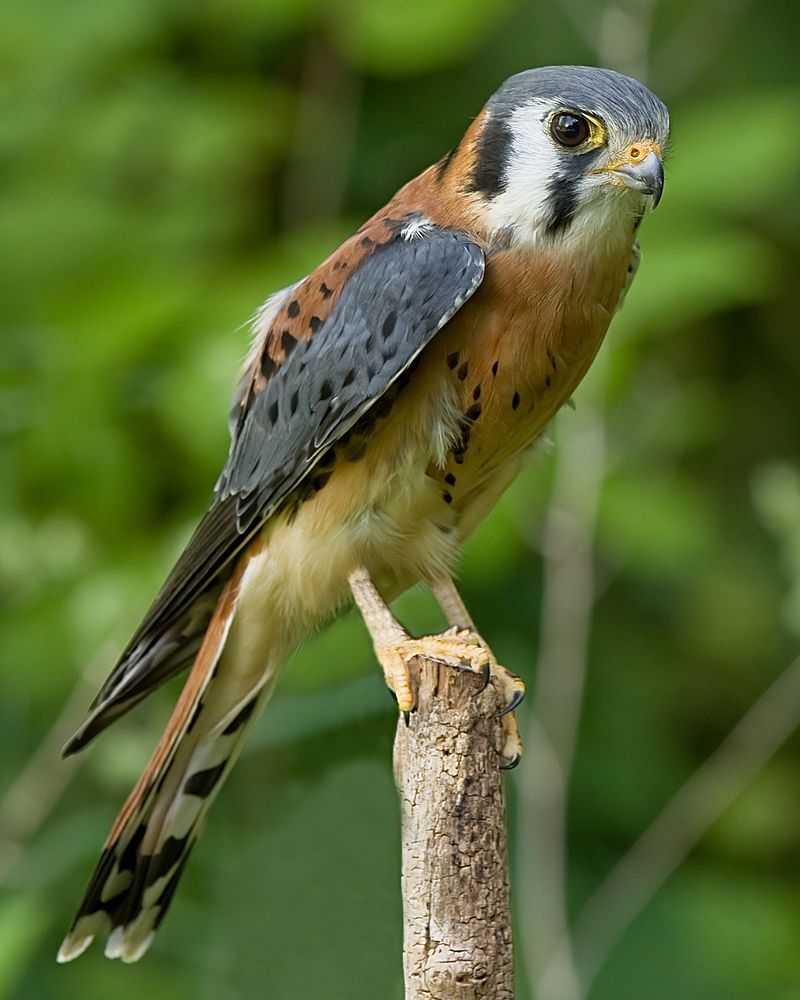
The American kestrel, also known as the sparrow hawk, is a type of falcon and one of the most common species of raptor in North America. It has a wide range of sizes, depending on the sex and subspecies of the bird.
Generally, male American kestrels are more significant than female kestrels. The size of an American kestrel can range from as light as a blue jay to as heavy as a mourning dove.
This means that, depending on the bird, the size of an American kestrel can vary by a ratio of two to one. The American kestrel is a highly adaptable bird and can be found in a wide range of habitats, from open fields and grasslands to woodlands and forests.
They are also found in urban areas, where they can nest on buildings or other structures. The American kestrel is a vital predator, helping to balance small mammals and insect populations.
They are also a famous bird for falconry and are often used by experienced falconers.
| Kingdom | Animalia |
| Phylum | Chordata |
| Class | Aves |
| Order | Falconiformes |
| Family | Falconidae |
| Genus | Falco |
| Species | F. sparverius |
8. American Wigeon
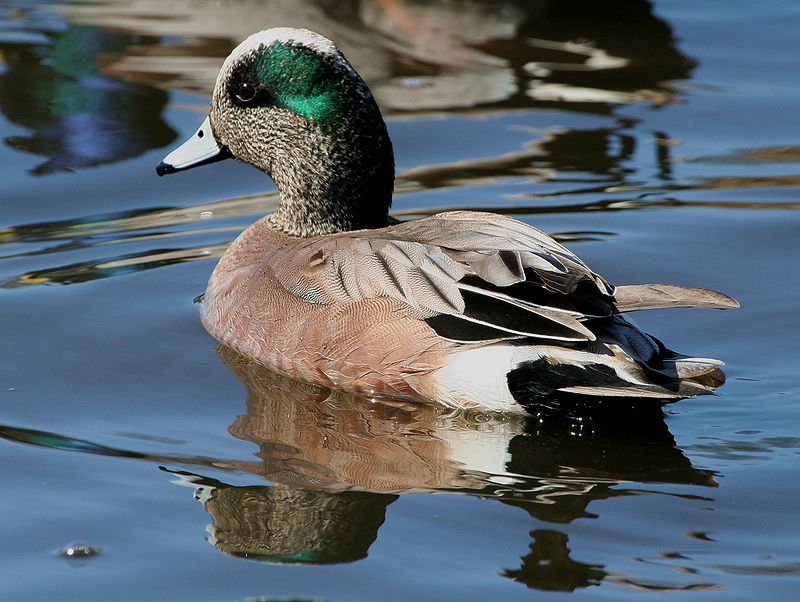
The American Wigeon, scientifically known as the Mareca Americana, is a species of dabbling duck native to North America. It is also referred to as the baldpate due to the white patch of feathers on the top of its head.
It is a member of the dabbling duck genus Mareca, which includes other wigeon species and is the New World counterpart of the Eurasian Wigeon.
The American Wigeon has a unique and distinct appearance, with a grayish-brown head, neck, and chest and a white patch of feathers on the top of its head. The rest of its body is primarily white, with a light brown or black tail.
It is a medium-sized duck, measuring approximately 16-20 inches long. The American Wigeon can be found in various wetland habitats across North America, including marshes, lakes, rivers, and ponds. It is a highly social duck, often seen in large flocks.
The American Wigeon is a dabbling duck that feeds on aquatic plants and insects by tipping forward and submerging its head in the water.
| Kingdom | Animalia |
| Phylum | Chordata |
| Class | Aves |
| Order | Anseriformes |
| Family | Anatidae |
| Genus | Mareca |
| Species | M. americana |
9. American Dipper
The American dipper, also known as the water ouzel, is an aquatic bird species native to western North America. It is a unique bird species, as it can swim and walk on land.
The American dipper is usually found near fast-flowing, cold freshwater bodies, where they build nests amongst rocks and crevices. They feed by diving into the water and finding food, such as small fish, aquatic insects, and crustaceans.
The American dipper is a medium-sized bird with a grayish-brown body, a white breast, and a white chin. They are known for their distinctive bobbing motions and loud, ringing calls.
The American dipper is a vital species that maintains healthy aquatic ecosystems, as it helps keep the population of aquatic insects in check.
| Kingdom | Animalia |
| Phylum | Chordata |
| Class | Aves |
| Order | Passeriformes |
| Family | Cinclidae |
| Genus | Cinclus |
| Species | C. mexicanus |
10. American Woodcock
The American woodcock is a small shorebird species found primarily in the eastern half of North America. Many names, such as the timberdoodle, the bogsucker, the hokum poke, the translator, and the Labrador twister know it.
It is a fascinating bird well adapted to various habitats, from wooded wetlands to open grasslands. The American woodcock is a plump bird with a long bill and large eyes.
Its mottled, brown, and grey plumage provides excellent camouflage in its natural habitat. The woodcock is most active at dawn and dusk when searching for its favorite food – earthworms.
The bird’s long bill digs up worms, which it then swallows whole. The American woodcock is an essential species in the North American ecosystem, providing food for predators such as owls, hawks, and foxes.
It is also an important game bird, with its population estimated at between six and seven million in the United States and Canada. The American woodcock is an exciting species that deserves to be appreciated and protected.
Its unique behavior and varied nicknames make it a delight to observe and a valuable addition to any nature enthusiast’s list of birds seen.
| Kingdom | Animalia |
| Phylum | Chordata |
| Class | Aves |
| Order | Charadriiformes |
| Family | Scolopacidae |
| Genus | Scolopax |
| Species | S. minor |
11. House Wren
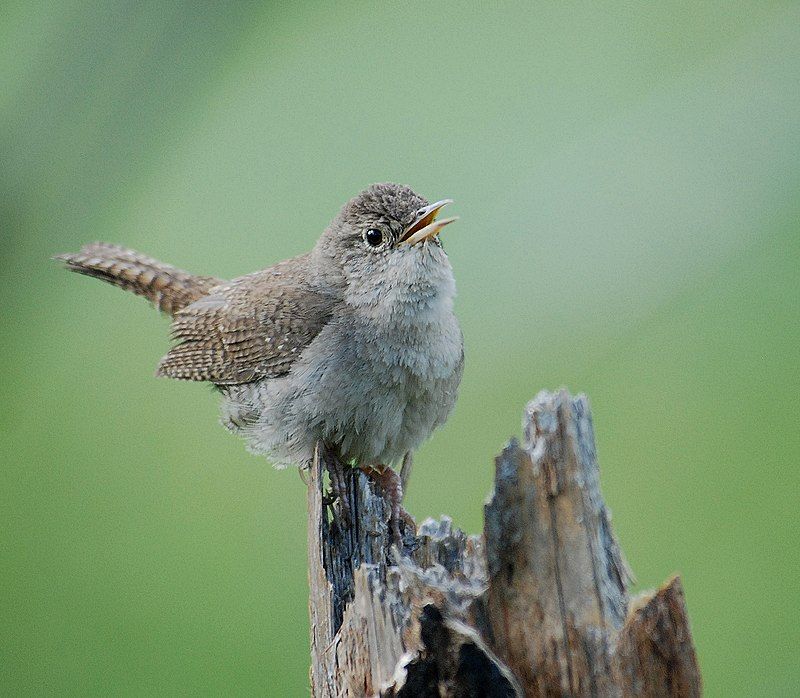
The house wren is a tiny bird belonging to the wren family Troglodytidae. Its range spans from Canada to southernmost South America, making it the most widely distributed native bird across the Americas.
Its presence is ubiquitous in suburban areas and is easily the most commonly encountered wren. Its small size and adaptability to urban environments have allowed it to thrive in many areas, making it a familiar sight in backyards and parks.
It is also an essential part of the food chain, as it consumes various insects and other invertebrates; this helps keep insect populations in check and benefits other wildlife. The house wren is a valuable species that serves a vital role in the ecosystem.
| Kingdom | Animalia |
| Phylum | Chordata |
| Class | Aves |
| Order | Passeriformes |
| Family | Troglodytidae |
| Genus | Troglodytes |
| Species | T. aedon |
12. Ducks
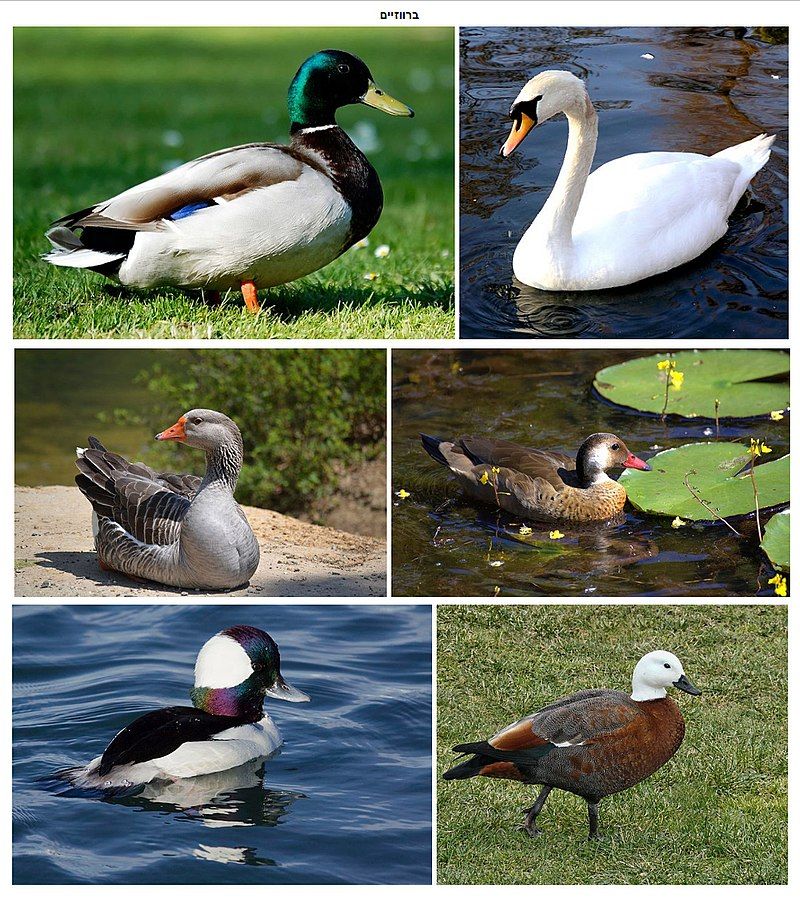
The Anatidae family is a group of water birds that includes ducks, geese, and swans. This family of birds is found in many different places all around the world, except for Antarctica.
These birds have adapted to their aquatic environments, allowing them to swim, float on the water’s surface, and dive in shallow water.
Ducks, geese, and swans have unique features that make them able to live in water, like webbed feet and waterproof feathers.
These adaptations have allowed them to thrive in the water and become vital to the ecosystem. They are considered an essential food source for many other animals, and their presence helps keep the environment in balance.
| Kingdom | Animalia |
| Phylum | Chordata |
| Class | Aves |
| Order | Anseriformes |
| Family | Anatidae |
13. Pelecaniformes
The Pelecaniformes are an order of aquatic birds found in various habitats worldwide. These birds range in size from medium-sized to large and can be identified by their feet, which have all four toes webbed.
This characteristic has led to them sometimes being referred to as “totipalmate” or “steganopodes,” though these terms are now considered erroneous. The Pelecaniformes order includes many species, such as pelicans, cormorants, gannets, anhingas, and frigatebirds.
These birds typically live near coastal areas, but some species are also found in inland regions near large bodies of water. They are highly adapted to their aquatic environment, with feathers that repel water, allowing them to dive and swim easily.
These birds primarily feed on fish, but some species also feed on small land animals, such as amphibians and snakes. The Pelecaniformes are an essential part of the aquatic food chain, providing a vital source of nutrition for other creatures in the environment.
| Kingdom | Animalia |
| Phylum | Chordata |
| Class | Aves |
| Clade | Aequornithes |
| Order | Pelecaniformes |
14. Canada Jay
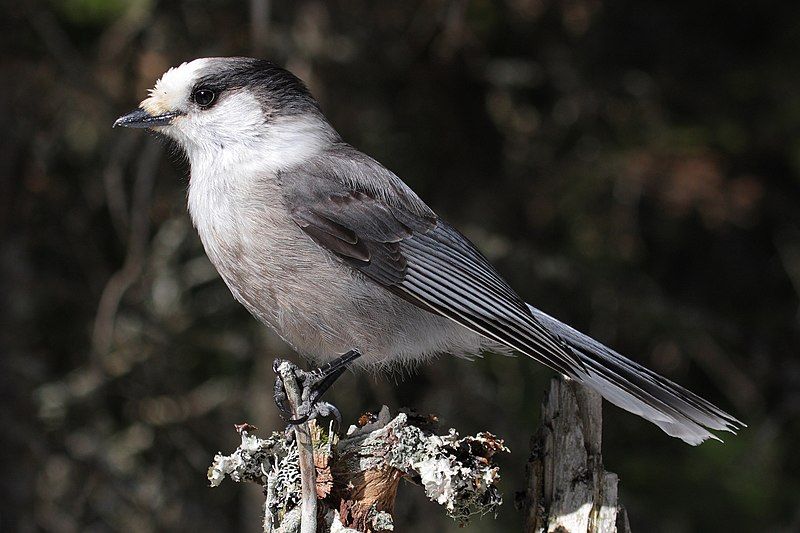
The Canada jay, also known by several other names, including the gray jay, grey jay, camp robber, and whisky jack, is a type of passerine bird belonging to the family Corvidae.
This species of bird is native to North America, inhabiting boreal forests from the tree line to the north and the Rocky Mountains subalpine zone to the south, extending as far south as New Mexico and Arizona.
The Canada jay has a wide range of adaptations to survive in such a wide variety of habitats. This bird species is a year-round resident of its range and can survive temperatures as low as -30°C.
It has a thick coat of feathers that helps protect it from the cold and is highly adapted to foraging for food in the winter months. This bird species is omnivorous, eating various foods, from invertebrates to small mammals, carrion, fruit, and berries.
The Canada jay is a common sight across much of North America and is widely regarded as a symbol of the boreal forest.
| Kingdom | Animalia |
| Phylum | Chordata |
| Class | Aves |
| Order | Passeriformes |
| Family | Corvidae |
| Genus | Perisoreus |
| Species | P. canadensis |
15. Common Loon
The common loon, also known as the great northern diver, is a species of bird that belongs to the loon family. These birds have a distinct plumage, which includes a broad black head and neck with a hint of greenish, purplish, or iridescent hues.
This plumage helps the loon blend in with its watery surroundings, making it difficult to spot. The common loon also has white and black markings on its back, and its wings are black and white. Its eyes are yellow, and its legs are short and gray.
The common loon is an excellent swimmer and dives down to depths of up to 200 feet to feed. It mainly feeds on fish but will also eat crustaceans, amphibians, and small mammals. The common loon is a solitary bird, usually seen alone or in small groups.
It is found in northern North America and Canada, and its population is stable.
| Kingdom | Animalia |
| Phylum | Chordata |
| Class | Aves |
| Order | Gaviiformes |
| Family | Gaviidae |
| Genus | Gavia |
| Species | G. immer |
16. Phainopepla
The phainopepla, commonly known as the northern phainopepla, is a small bird native to Central America. It is part of the Ptiliogonatidae family of tropical birds known as silky flycatchers.
The bird’s name comes from Greek, with ‘pain’ meaning ‘shining’ and ‘pepla’ meaning ‘robe.’ This is about the male’s distinctive plumage, which is bright and vibrant in color.
The phainopepla is the only species of the Ptiliogonatidae family to be found in the northern hemisphere, making it the most northerly representative of the tropical family.
| Kingdom | Animalia |
| Phylum | Chordata |
| Class | Aves |
| Order | Passeriformes |
| Family | Ptiliogonatidae |
| Genus | Phainopepla |
| Species | P. nitens |
17. Northern Gannet
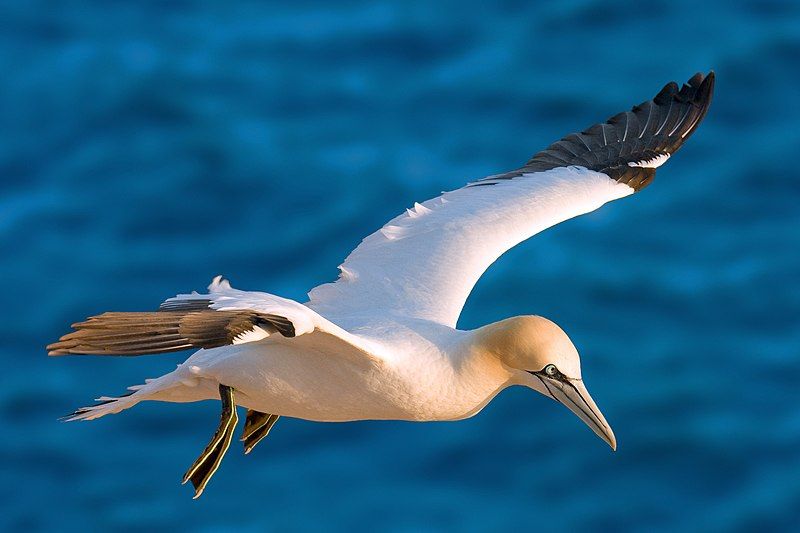
The northern gannet is a large seabird that belongs to the gannet family, Sulidae. It is native to the coasts of the Atlantic Ocean and breeds in both Western Europe and Northeastern North America. This makes it the largest seabird in the northern Atlantic.
There is no visible difference in the sexes of the northern gannet, as they have similar physical appearances. The north gannet has a white head, wings, and black tail. Its beak is yellow, and it has long, pointed wings that it uses to soar in the air.
They can dive from heights up to 30 meters to catch fish, and they often hunt in groups. Northern gannets feed mainly on fish, such as mackerel, herring, and sand eels.
The northern gannet is an integral part of the Atlantic Ocean’s ecosystem, as it helps to maintain the balance of the food chain.
| Kingdom | Animalia |
| Phylum | Chordata |
| Class | Aves |
| Order | Suliformes |
| Family | Sulidae |
| Genus | Morus |
| Species | M. bassanus |
18. Brant
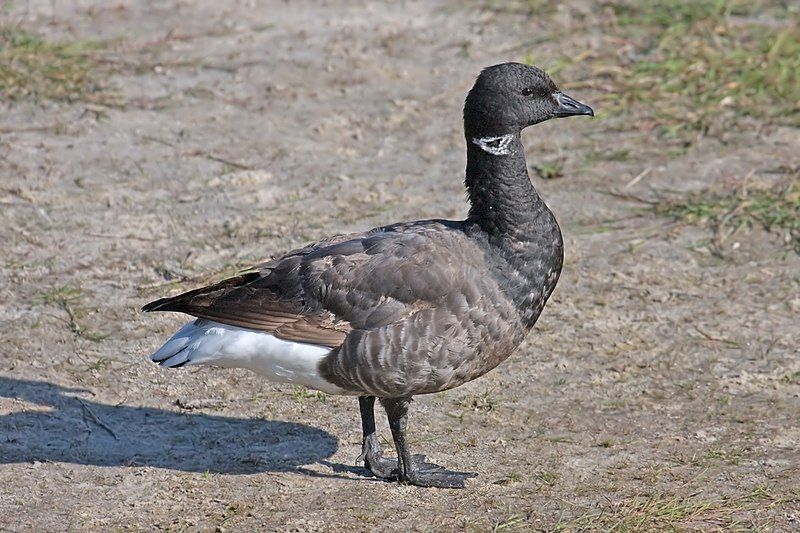
The brant or Brent goose is a species of small goose belonging to the genus Branta. It is found in three distinct subspecies, which typically winter along temperate-zone coastlines and breed in the arctic tundra.
Due to its tendency to flock around coastal areas, the species has become well-known and easily recognizable. The Brent oilfield, located in the North Sea off the coast of Scotland, is named after the species.
This oilfield is one of the most essential in the world, and it has been a significant source of oil for the United Kingdom since 1976. The name of the oilfield pays homage to the brand Brent goose, a species that has been a part of the local environment for centuries.
By naming the oilfield after the species, the United Kingdom has recognized the importance of the species to the local environment. It has paid tribute to its significance in the region.
| Kingdom | Animalia |
| Phylum | Chordata |
| Class | Aves |
| Order | Anseriformes |
| Family | Anatidae |
| Genus | Branta |
| Species | B. bernicla |
19. Sandpiper
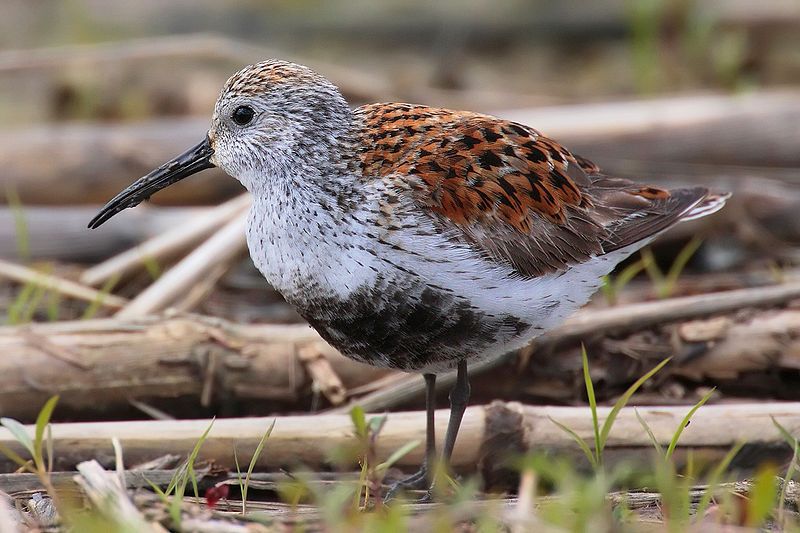
Sandpipers are a large family of wading birds, scientifically known as Scolopacidae. They are further divided into many species, with names such as sandpipers, curlews, and snipes.
Sandpipers are common and can be seen in many areas, including beaches, mudflats, and marshes. These birds mainly feed on small invertebrates that they pick from mud or soil.
Their long beaks are specially designed for probing the mud for worms, insects, and other organisms that live in the mud. In addition, some species of sandpipers also feed on small fish, crustaceans, and mollusks. Sandpipers are known for their migratory habits.
They often migrate in large flocks, sometimes over long distances.
They usually start their migration in the late summer and early autumn, traveling from the Arctic Circle and other northern regions to the warmer parts of the world, such as South America. Sandpipers are an essential part of the ecology of many areas.
As they feed on small invertebrates, they keep populations of these animals in check, helping to maintain the balance of the ecosystem. They are also an important food source for predators, such as hawks and owls.
| Kingdom | Animalia |
| Phylum | Chordata |
| Class | Aves |
| Order | Charadriiformes |
| Family | Scolopacidae |
Conclusion
North America is home to a wide variety of birds, both native and migrating. These birds play an integral role in the environment, providing vital benefits such as pest control, pollination, and seed dispersal.
They also provide immeasurable joy to bird watchers and nature lovers alike. North America is truly a bird watcher’s paradise, and its diverse bird population deserves to be enjoyed and protected.